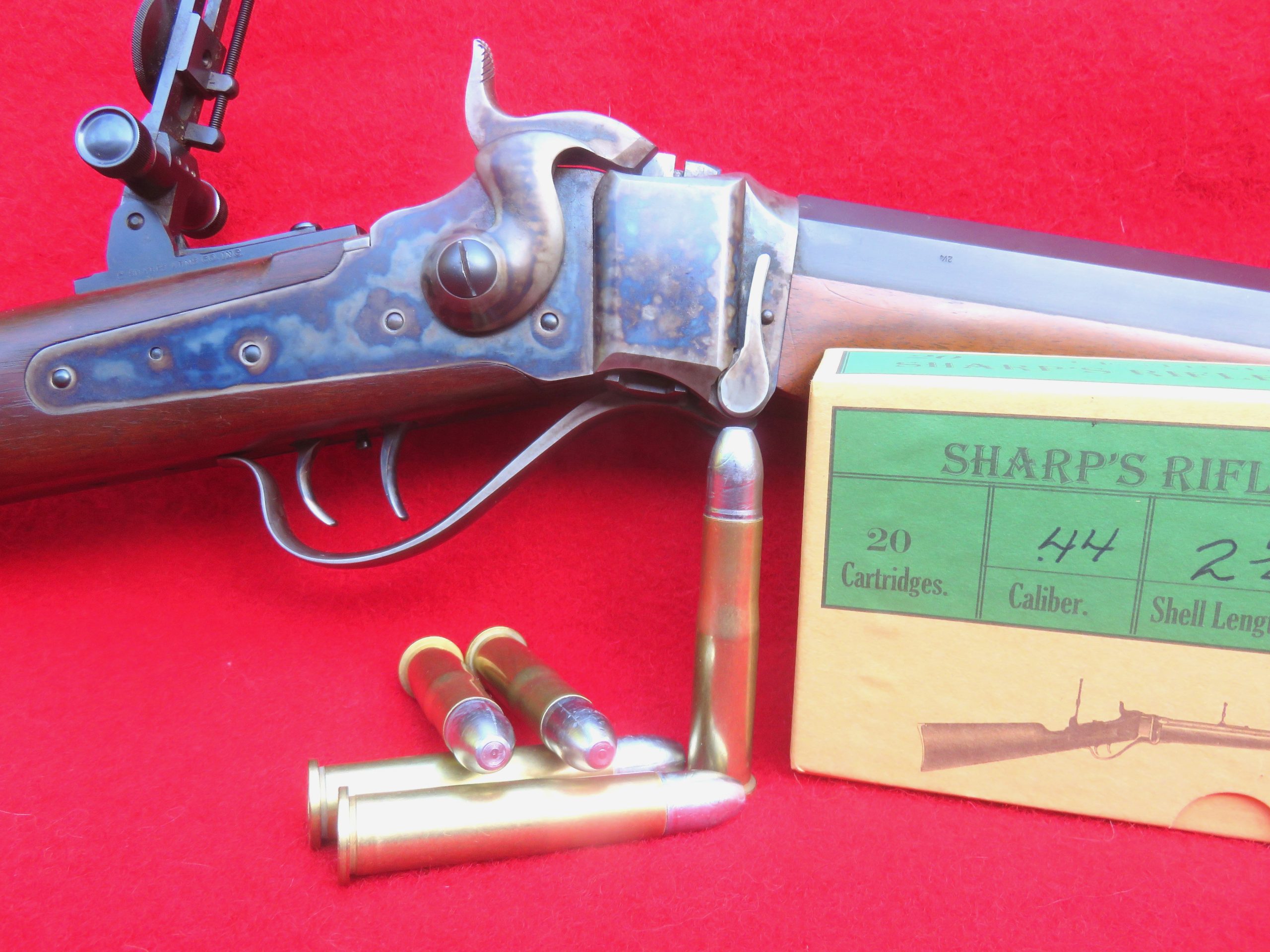
By Mike Nesbitt | Contributing Editor
“Hefty Hannah” is a heavy .44 caliber Sharps rifle that I haven’t been using for a while, so I recently remedied that problem.
This gun always performed rather well for me and the main reason why I turned away from it was the recoil, even from this 15 ¼ pound rifle. I shot it fairly well and for a number of years, with a variety of loads when I fired my rifles from my right shoulder. When I switched to become a left-handed rifle shooter, because I needed to aim with my left eye, things changed and I could not quickly get used to any recoil on my left side.
We should think that a 15-pound rifle shooting a black powder cartridge with a 400-grain bullet (or heavier) wouldn’t have enough of a recoil to be considered serious. I didn’t think so, until I shot it left-handed. My right shoulder had several decades of experience so it was well “broken-in” to accept recoil while my left shoulder was a complete beginner.

That really hasn’t changed, although now I’m simply more used to shooting as a southpaw plus the fact that I wear a shoulder pad on my left side. And, as far as getting back to Hefty Hannah, other guns got in the way. Some of those I have told you about such as my Highwall in .38-55 caliber by C. Sharps Arms plus the scope-sighted Sharps rifles in .45-70 and .45-90 which were also products of C. Sharps Arms. Those scoped rifles get used in silhouette matches but for general ‘buffalo gun shoots’ I certainly do prefer the iron sights.
Quite recently I decided to try Hefty Hannah with some bullets of a slightly harder alloy than what I had been using, so just a few rounds were loaded. The load I used was nothing new, it was just what I used in this rifle before, and details will be given shortly. On the target which was posted at just 100 yards, five of those loads printed well enough to really pique my interest again and now I want to use this rifle/load combination in the final Old West Centerfires Match for this season, when, hopefully, I’ll be able to raise my aggregate score just a little bit.
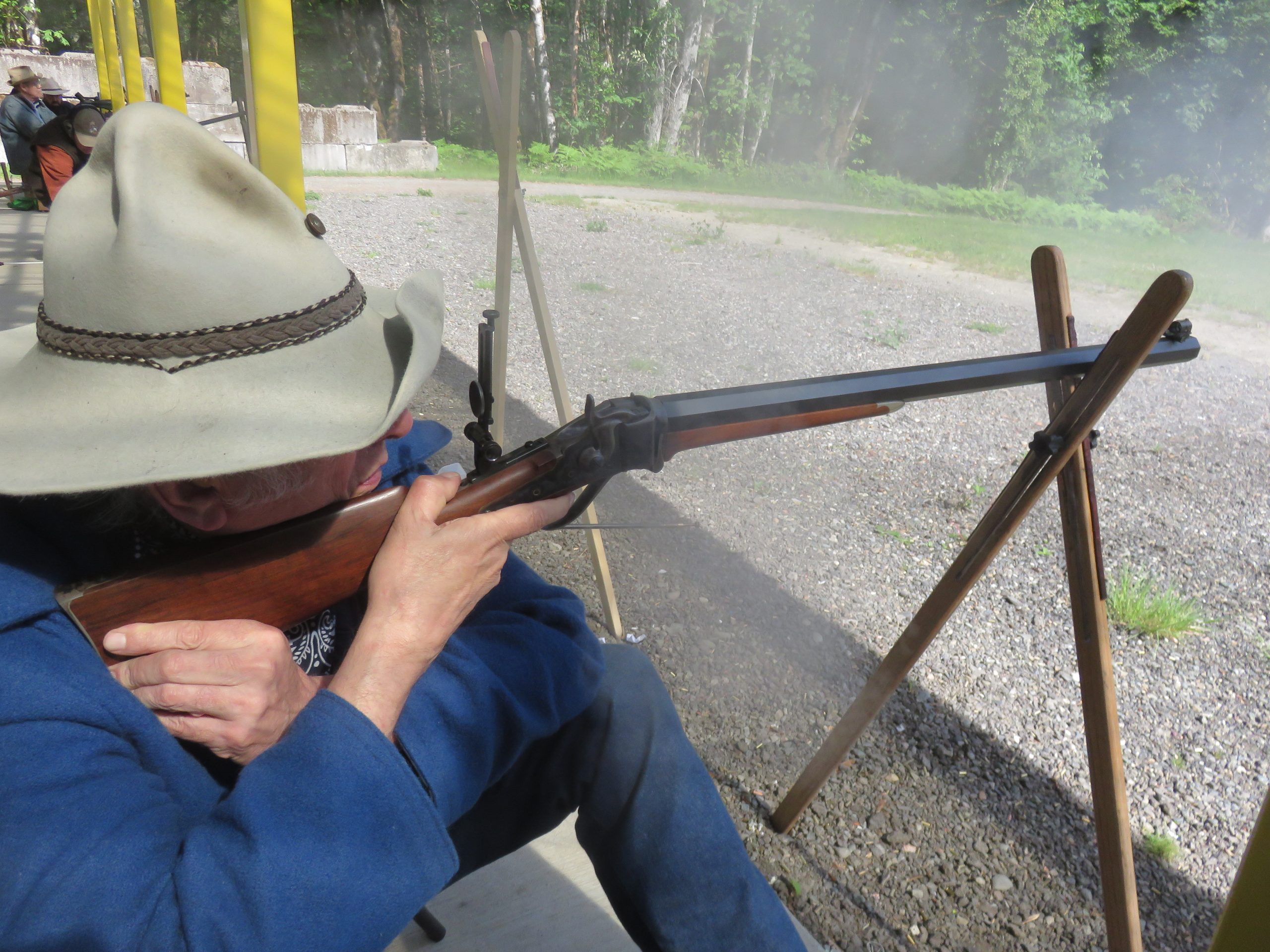
Now, what kind of rifle is Hefty Hannah? It has been a while since I mentioned this fine rifle so that is a good question to ask. “Hannah” is an 1874 Sharps, a Hartford Model, in .44-77 caliber. It has a #2 Heavy octagon Badger barrel, 30-inches long, measuring a full 1 ¼ inches wide at the muzzle, which gives this gun most of its weight. This rifle, with its heavy barrel, has the profile of a buffalo gun from the early 1870s and the name “Hannah” was modified from O.P. Hanna, a Montana buffalo hunter with several very interesting stories to tell. Hanna used a heavy .44 caliber Sharps although his rifle, which is on display at Old Trail Town in Cody, Wyoming, was in .44-90 caliber.
I’ll admit that I didn’t learn what the chambering was in Hanna’s old rifle until after I had my rifle, Hefty Hannah, already built, although I did know that the older Sharps rifle was in .44 caliber. I had assumed that it was a .44-77 mainly because of the wide popularity of the old .44-77 back in those days. The bigger .44-90s were certainly designed for buffalo hunting but rather few of them were originally made. Besides that, I already had a good .44-90 and the .44-77 cartridge simply fits my uses better, so I would have selected the .44-77 chambering for my Hefty Hannah even if I had known what the actual chambering for O.P. Hanna’s rifle was at the time my gun was ordered.
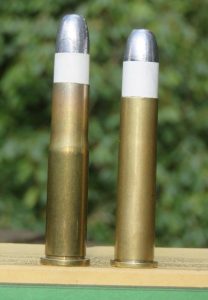
Besides that, this was not my first .44-77 caliber rifle, it was my third. So, I already had the brass and dies plus bullet molds and other necessary items for this caliber. Some of the tools for reloading the .44 Sharps cartridges are hard to locate these days and getting them often requires a special order. But all of that was behind me and I was more than ready to accept another .44-77 for good black powder cartridge shooting, especially a heavy rifle.
The .44-77 cartridge was introduced by Sharps in 1869. It and the .43 Spanish were both developed about the same time, both based on the .42 Berdan cartridge. The .43 Spanish uses a bullet of .439” diameter while the .44-77 fires a bullet of .446-inch to fill the grooves of the barrel. One reason for using that size of bullet is because Sharps was already making .44 caliber sporting rifles, in the earlier percussion era, and they already had the barrel-making equipment for that size. Of course, the .44-77 and the .43 Spanish were designed for different purposes, the .44-77 was a sporting cartridge while the .43 Spanish was primarily a round for military use.
Sharps’ official name for this cartridge was the .44-2 ¼-inch Sharps. Some refer to it as the .44-2 ¼” Bottleneck but there were no .44 Sharps cartridges with straight cases. Their first loading for this cartridge used 70 grains of powder beneath a 380-grain bullet but after a few years the standard loading was increased to 75 grains of powder while the bullet weight was raised to 405 grains. It was UMC (Union Metallic Cartridge Company) who produced a loading with 77 grains of powder under the 405-grain paper patched bullet which gave this cartridge its best remembered name, the .44-77.
Other loadings, mainly with heavier bullet weights, were available. In addition to those loads it must be remembered that the American team beat the Irish in 1874 with Sharps and Remington rifles chambered for this cartridge while using loads of 90 grains of powder under bullets weighing 470 grains or more. Those cartridges were later called the .44-90 Regular and they were intended only for target shooting, gaining an admirable reputation.
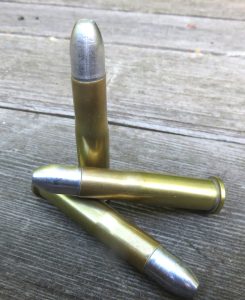
The loading I just tried, more of a sporting load, used 75 grains of GOEX’s earlier and no longer available “Cartridge” powder under a 400-grain bullet cast from Accurate Molds’ #44-400B. That bullet has two lube grooves plus a crimp groove but I make sure that lube is filled into all three of those grooves. And the lube I use is still BPC from C. Sharps Arms. “Cartridge” powder is rather similar to Swiss 1½ Fg and when I burn up what I have left of “Cartridge,” I’ll quickly switch to the Swiss powder for my loading.
Some words about Accurate Molds are certainly in order here. The bullets I used for these .44-77 cartridges drop from the mold at .448-inch and when they are sized in a .446-inch die, I can feel each of the bands being sized. I appreciate that simply because it tells me that those bullets are at the desired diameter. When an Accurate Mold is ordered, Tom, the owner and top mold-maker, wants to know what diameter you want the bullets to be as well as what lead alloy you intend to use because different alloys have different shrink rates. If I was to order another mold for the .44-77 from Accurate Molds, the alloy I’d mention would be a 16-1 lead-tin mixture. For complete information about Accurate Molds, simply visit their website at accuratemolds.com.
Also, I really wish Starline or another maker of cartridge cases would bring the .44-77 (and the .44-90) back to the “available” list. I’m still using the good Jamison cases which are no longer being made. However, new cases are being made on order from Rocky Mountain Cartridge LLC. They make brass for obsolete caliber guns by turning the cases on a lathe. Rocky Mountain Cartridge is located in Worland, Wyoming and their website address is rather easy to remember, rockymountaincartridge.com.
Only five shots were fired with this load, what we might call just a beginning, and those shots were checked with a chronograph, using the handy little Garmin Xero C1 chronograph, to see what the bullets’ speeds were. Their velocity was some 70 feet per second slower than what I had expected, having a muzzle velocity of about 1290 fps. While that speed was somewhat disappointing, the accuracy was rather good. Of course, accuracy is exactly what I’m looking for and if I was really demanding higher velocities, I’d be doing my shooting with something other than a black powder cartridge rifle.
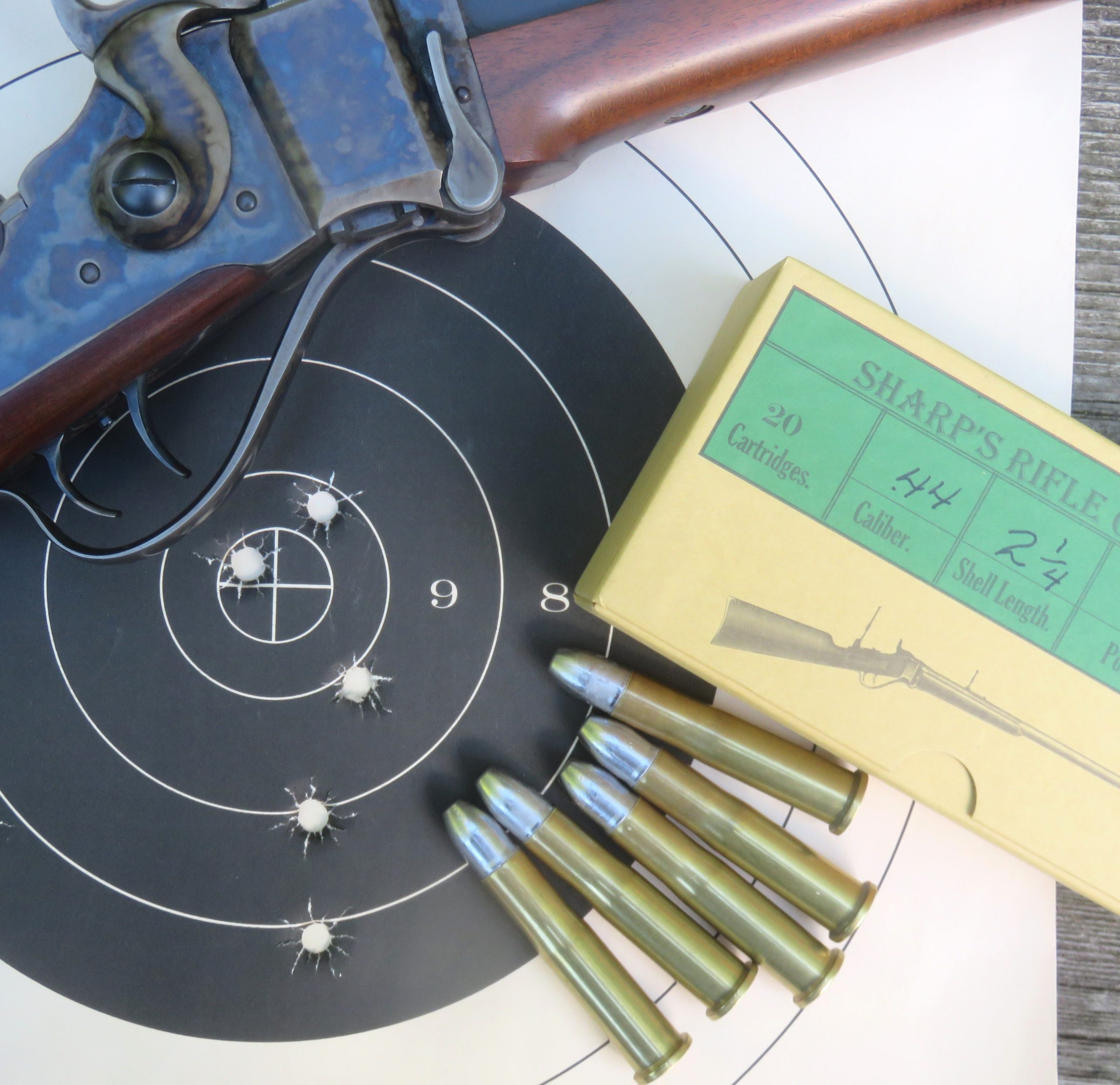
The group those five shots produced at 100 yards included three 10’s, one of them an X, one 9, and one 8, for a score of 47-X. That’s pretty good, for me… It reminds me of when I took 1st place in one of our Old West Centerfires Matches, back in 2019, while using Hefty Hannah and my scores were a 91-3X at 100 yards plus a 93-X at 200 yards. I’ve only had scores over 90 on those targets a couple of times but I will be trying to do that, with new loads in Hefty Hannah, again.
A picture of Hefty Hannah laying across that target with those recent five shots is included but I want make it very clear, this is not success. That isn’t a group that I’m really proud to show. Instead, it is a starting point, something to build upon, something to improve.
In order to possibly achieve that goal, I’ve just loaded more ammo for Hefty Hannah. To tweak those loads just a bit, the powder charge has been increased by one grain, to 76 grains of the “Cartridge” powder. That might make a difference, maybe not. Only doing more shooting will tell.
More shooting will certainly be done because, I’ll admit it, I’m just a little “buzzed” or excited about shooting with Hefty Hannah again. This is going to work out and I’ll keep you posted. For me, this is like starting all over again.



